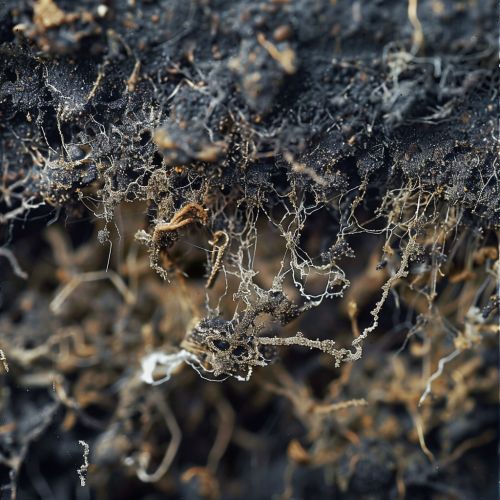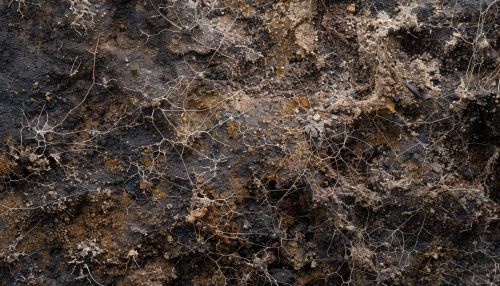Cryptobiotic soil
Introduction
Cryptobiotic soil, also known as biological soil crust, is a complex community of microorganisms that live in the uppermost layer of soil. This community, which includes cyanobacteria, green algae, lichens, mosses, and fungi, forms a living, breathing skin that covers the soil surface in many parts of the world.


Formation and Composition
Cryptobiotic soil forms over hundreds to thousands of years, as wind and water deposit dust and organic material on the soil surface. Cyanobacteria, the primary architects of the soil crust, bind these particles together with their filamentous growth and the production of polysaccharides, creating a stable surface layer. Other organisms, such as lichens and mosses, colonize this crust and contribute to its growth and development.
The composition of cryptobiotic soil varies depending on the local climate, soil type, and disturbance history. In arid regions, the crust is often dominated by cyanobacteria and lichens, while in more humid environments, mosses may be more prevalent. Regardless of the specific composition, all cryptobiotic soils play a crucial role in ecosystem function.
Ecological Importance
Cryptobiotic soil is a keystone element of many ecosystems, particularly in arid and semi-arid regions. It contributes to ecosystem function in several ways:
Soil Stabilization
By binding soil particles together, cryptobiotic soil reduces erosion and helps maintain soil structure. This is particularly important in arid regions, where wind and water erosion can be severe.
Nutrient Cycling
Cryptobiotic soil plays a critical role in the nutrient cycle, particularly the cycling of carbon and nitrogen. Cyanobacteria in the soil crust are capable of nitrogen fixation, converting atmospheric nitrogen into a form that plants can use. This is a crucial service in nutrient-poor desert soils.
Water Retention
The polysaccharides produced by cyanobacteria help the soil retain water, increasing its availability for other organisms. This is particularly important in arid regions, where water is often a limiting factor for plant growth.
Threats and Conservation
Despite its ecological importance, cryptobiotic soil is highly vulnerable to disturbance. Physical disturbances, such as trampling by livestock or off-road vehicles, can destroy the soil crust and set back its development by hundreds of years. Climate change, with its associated changes in temperature and precipitation patterns, also poses a significant threat to these fragile ecosystems.
Conservation of cryptobiotic soil is a complex challenge, requiring a combination of public education, land use planning, and restoration efforts. Many land management agencies now recognize the importance of cryptobiotic soil and are implementing measures to protect and restore it.
Conclusion
Cryptobiotic soil is a vital component of many ecosystems, providing essential services such as soil stabilization, nutrient cycling, and water retention. Despite its importance, it remains a largely overlooked and underappreciated element of our natural world. As we continue to learn more about this fascinating community of organisms, it is our hope that we can develop strategies to protect and conserve it for future generations.
